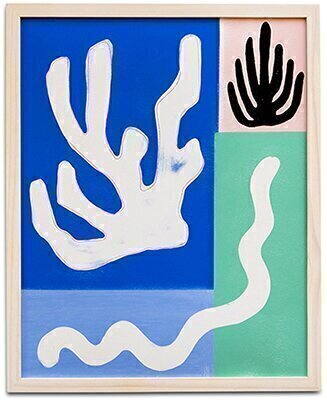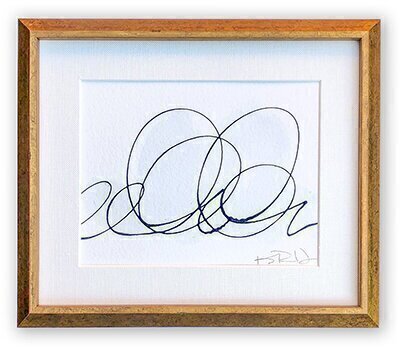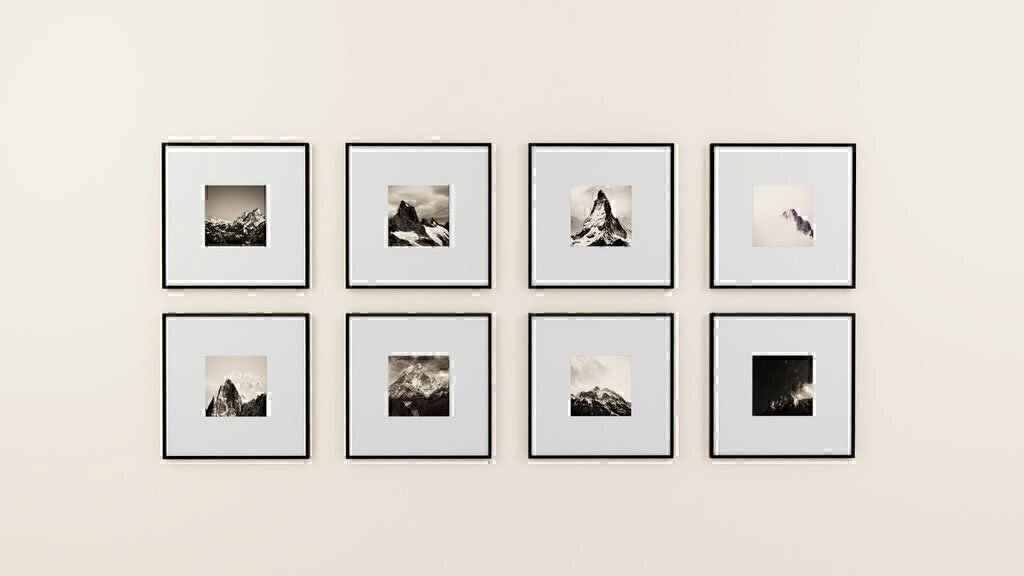Last updated August 2019
Your diploma from Big Bucks U. That giant photo from your wedding (a reminder that you’ll never again be that gorgeous or well-dressed). A beautiful thrift-store oil painting surrounded by regrettable plastic molding. Most of us have lots of things we’d like to frame and display, but the bother of taking them to a shop, finding supplies to do the work ourselves, or paying a fortune to professionals means our stuff remains unhung.
 Here’s info on how to get help. Plenty of shops in the area have staff that provide expert advice, take care of your precious stuff, and don’t charge high prices. And if you want to DIY, online businesses offer products and instructions.
Here’s info on how to get help. Plenty of shops in the area have staff that provide expert advice, take care of your precious stuff, and don’t charge high prices. And if you want to DIY, online businesses offer products and instructions.
Finding Shops That Score
If someone else will do the work, you’ll want a skilled pro who offers sage advice. Staff at the best shops will spend time with you exploring framing options (Single or double mat? Metal or wood frame? Plexiglass or real glass?). They should then produce a fine-looking final product.
Here at Checkbook.org you’ll find customer reviews we’ve collected of local framing shops. We surveyed Checkbook and Consumer Reports subscribers, plus other randomly selected individuals. You’ll notice big shop-to-shop differences for customer satisfaction.
Avoiding a Big Bill
You can hire a local shop to do your framing, ship your stuff to an internet-based outfit, or do some or all of the work yourself.
DIY options usually cost the least. You can buy inexpensive premade frames at stores like Target, Pottery Barn, and IKEA. Don’t assume these frames will leave you with lousy-looking displays. “I do kid artwork walls for some of my clients, and cheaper frames like this are a great option,” says Allison Marvin, an art consultant whose Sightline firm helps people buy and mount art.
If you have odd-sized art or want customized frames and mats, several websites allow you to enter measurements and shop from hundreds of frames—plus buy custom-cut mats, glass or plexiglass fronts, and more. The store ships your products and you assemble everything. In our experience, this is a relatively simple but not totally goof-proof transaction. Precise measuring is crucial. We find that plexiglass panels we receive from online vendors usually have a lot of fuzz that’s a pain to remove, and that perfectly positioning art onto precut mats can be harrowingly tedious. If you’re using a mat, buy linen mounting tape (basically an acid-free, won’t-hurt-art variation on masking tape that costs $10–$15 at art stores or online) to affix art to the mat.
 If you want a full-service frame-up, many local stores can help. Also, full-service internet-based companies like Framebridge.com, PictureFrames.com, and SimplyFramed.com will supply tubes or other mailers for you to ship your artwork; they then frame the item and ship it back. If your image is a digital photo or print, the process is simpler: Email it to the company, which then sizes it, prints it, and sends you a framed version a few weeks later. Simply Framed, in particular, offers a wide range of suggestions tailored to very specific sorts of art and artifacts—aka a groovy plexibox (also known as a shadowbox) for a textile or an Old Worldly gilt wooden frame for a classy oil painting.
If you want a full-service frame-up, many local stores can help. Also, full-service internet-based companies like Framebridge.com, PictureFrames.com, and SimplyFramed.com will supply tubes or other mailers for you to ship your artwork; they then frame the item and ship it back. If your image is a digital photo or print, the process is simpler: Email it to the company, which then sizes it, prints it, and sends you a framed version a few weeks later. Simply Framed, in particular, offers a wide range of suggestions tailored to very specific sorts of art and artifacts—aka a groovy plexibox (also known as a shadowbox) for a textile or an Old Worldly gilt wooden frame for a classy oil painting.
One reason to stick with a local shop is that it’s easier to discuss your project and get advice in person. Another is that shipping your precious 1974 Rolling Stones poster or your kid’s artwork means it might get lost. This recently happened to our editorial director, though the company refunded her money and paid for her waylaid print.
Start by shopping around for a good price—you’ll find big differences from business to business.
Our undercover shoppers asked a sampling of local picture framing shops plus six online outlets for their prices to frame two different pieces. The table below reports the prices we were quoted along with prices for materials from companies that supply stuff for DIY framers.
For the larger piece, prices from surveyed full-service local shops ranged from $114 to more than $500; for the smaller piece, prices ranged from $69 to more than $300. The lowest price for the two pieces combined was $183; the highest was $865.
Hobby Lobby offered the lowest overall prices—lower even than many of the prices we collected from web-based services. The Michaels stores we surveyed also quoted low prices; they were about 40 percent lower than the all-store average. But don’t assume that big chain operations always charge lower prices than smaller outfits. For example, for the two pieces we shopped, the average prices at the Fastframe stores we surveyed were about 34 percent higher than the average for all surveyed stores. We also found that prices can vary substantially from location to location for the big chains.
As you can see, the web-based stores consistently offered low prices. FrameItEasy.com’s prices were $61 for the smaller piece and $78 for the larger one (but keep in mind that if you buy from it you have to do the final assembly steps). Framebridge.com was the price winner among full-service internet framing services: Its prices were $85 and $145.
|
Smaller Piece 9"x12" in a 14"x17" 1/2-inch metal frame |
Large Piece 20"x16" in a 27 3/4"x23 3/4" one-inch frame |
|---|---|---|
| LOCAL STORES | ||
| Hobby Lobby, 1280 Willow Pass Rd, Concord, 925-246-9915 | $69 | $114 |
| A C Graphics, 79 Belvedere St #12, San Rafael, 415-456-0363 | $69 | $146 |
| Michaels, 2415 Charleston Rd, Mountain View, 650-968-8698 | $90-$100 | $180-$200 |
| Michaels, 3991 Hollis St, Emeryville, 510-658-4830 | $108 | $184 |
| North Berkeley Frame, 1744 Shattuck Ave, Berkeley, 510-549-0428 | $125-$130 | $175-$185 |
| Ben Franklin, 1409 2nd St, Napa, 707-224-4458 | $113 | $204 |
| Jo-Ann Fabric & Craft Store, 1675 Willow Pass Rd, Concord, 925-671-7141 | $129 | $202 |
| Sticks Framing, 1579 Solano Ave #B, Berkeley, 510-526-6603 | No price | $233 |
| Morita’s Picture Framing, 820 W Hamilton Ave, Campbell, 408-374-6622 | $160 | $250 |
| Frameworks, 5420 Ygnacio Valley Rd #50, Concord, 925-672-6066 | $185 | $250 |
| Cheap Pete’s Frame Factory, 11 E 4th Ave, San Mateo, 650-344-1727 | $158 | $289 |
| Art & Frames Unlimited, 2284 Old Middlefield Way, Mountain View, 650-967-7033 | $179 | $275 |
| The Great Frame Up, 5427 Telegraph Ave, Oakland, 510-601-6389 | $120 | $350 |
| Glenn Custom Framing, 7027 Stockton Ave, El Cerrito, 510-558-1078 | $175 | $307 |
| Fastframe, 1700 Market St, San Francisco, 415-255-1595 | $226 | $308 |
| Frame-O-Rama, 1920 Polk St, San Francisco, 415-441-3636 | $196 | $338 |
| Painters Place, 283 9th St, San Francisco, 415-431-9827 | $185-$200 | $350 |
| P & L Framing, 1005 Oak Hill Rd, Lafayette, 925-283-4668 | $240 | $320 |
| Framer’s Workshop, 2439 Channing Way, Berkeley, 510-849-4444 | $202 | $380 |
| University Art, 2550 El Camino Real, Redwood City, 650-328-3500 | $200 | $400 |
| Art Loft-Montclair, 2082 Antioch Ct, Piedmont, 510-339-0890 | $256 | $420 |
| Fastframe, 371 State St, Los Altos, 650-949-3278 | $321 | $419 |
| Storey Framing, 1645 Hopkins St, Berkeley, 510-524-3422 | $246 | $572 |
| Michael W Perry & Co, 1837 Divisadero St, San Francisco, 415-563-8853 | $325 | $540 |
|
ONLINE SERVICES
|
||
| FrameItEasy.com (supplies materials and customers complete assembly) |
$61 | $78 |
| FrameDestination.com (supplies materials and customers complete assembly) |
$66 | $128 |
| Framebridge.com (customers ship their art and company frames it) |
$85 | $145 |
| PictureFrames.com (customers ship their art and company frames it) |
$91 | $184 |
| FramedAndMatted.com (supplies materials and customers complete assembly) |
$108 | $196 |
| SimplyFramed.com (customers ship their art and company frames it) |
$124 | $184 |
Materials and What They Mean
The types and quality of materials you choose when framing also matter.
Mats
In general, a good brick-and-mortar or online framer should use acid- and lignin-free mats. This means that they’re cut (generally by computer-assisted devices, very occasionally by hand) from boards made using alkaline paper-making technology that contain no acids that will damage your artwork over time. It’s probably more important to check on this sign of quality when buying from online outfits or when picking up an inexpensive pre-made frame; most pro framers use nothing but acid-free materials.
Why invest in a mat at all? “Its primary purpose is to create air between the glazing and the artwork,” says Mark Klostermeyer of the Professional Picture Framers Association. “The mat absorbs and dispels moisture which can condense on your art and even sometimes cause mold.” Mats, whether single, double, or even placed behind the art (known as “floating”), also set off whatever you’re framing, enhancing the appearance of anything from a vintage postcard to a Rembrandt etching. With the floating styles, framers use spacers to create distance between the mat, the artwork, and the frame itself.
 At a good frame shop, staffers should show you a range of colors of mats, placing them up against your artwork to see what looks best or what you prefer. In general, white or eggshell tones let the art, not a trendy mat color, shine. Pros will also suggest mat widths. In general, they range from 1½ inches to more than four. “Or a wider, larger mat, like a snapshot in a 10-inch-deep mat, can make things feel more modern and significant,” says designer Nate Berkus, a creative advisor for Framebridge. Double mats, while more expensive, can be used to further accent colors in the piece, usually via a top mat in a neutral hue (white, black) and an inner mat in another shade that draws out a hue in the art.
At a good frame shop, staffers should show you a range of colors of mats, placing them up against your artwork to see what looks best or what you prefer. In general, white or eggshell tones let the art, not a trendy mat color, shine. Pros will also suggest mat widths. In general, they range from 1½ inches to more than four. “Or a wider, larger mat, like a snapshot in a 10-inch-deep mat, can make things feel more modern and significant,” says designer Nate Berkus, a creative advisor for Framebridge. Double mats, while more expensive, can be used to further accent colors in the piece, usually via a top mat in a neutral hue (white, black) and an inner mat in another shade that draws out a hue in the art.
Most online services let you upload an image of your artwork for this process, meaning you can play around with mat colors and sizes.
For some photos and posters, you might not want a mat. This can save you some money, and in the case of a large graphic image like a movie poster, might be the best option. “You almost don’t need a frame, since many posters have printed borders,” says Berkus. Plus newer framing techniques make it safer. “It used to be that forgoing a mat meant smashing the work up against the glass, which could damage it,” says Marvin. “But now framers use spacers to keep the piece away from the glass, and it can look very modern and also not hurt the art.”
Frames
No, you don’t have to keep all the frames in your house (or even on one wall) the same style and color. Thanks to the gallery wall trend and the increasing eclecticism in home décor, a mishmash of materials and styles (black, metal and straight, golden, curvy wood, maybe even mirrored and etched) denotes a collection amassed over time (and might mask the fact that you bought all the frames at your favorite discount store). In general, metal or plastic composites are cheaper; wood, particularly intricate or carved styles, can cost hundreds of dollars.
 Choosing a frame style is largely a personal matter, but it should cue off the art, if possible. “A lighter-feeling piece, like a delicate work on paper, might just get a slim frame, whereas a chunky abstract painting probably needs a frame with more heft,” says Marvin.
Choosing a frame style is largely a personal matter, but it should cue off the art, if possible. “A lighter-feeling piece, like a delicate work on paper, might just get a slim frame, whereas a chunky abstract painting probably needs a frame with more heft,” says Marvin.
Glass vs. Plexiglass vs. Nothing
If you’re framing an oil or acrylic painting, you’ll most likely want to keep its surface uncovered and frame it without a glass or plexiglass front. That’s because the surface is durable and it will show off the artist’s brushwork. But a watercolor needs a mat (to protect it from smudging and wrinkling) and a glass or plexiglass front to protect it from dust, sunlight, and little fingers. A clear front also helps keep a work from warping, and, frankly, helps it look important. Glass used to be the standard material, but it’s heavy and can break. The threat of earthquakes keeps some local framers from using it.
Both glass and plexi may filter out UV rays (though plexi must be treated with glazing) and reduce reflective glare. And there’s a wide range of glazing for both plexi and glass, ranging from simple UV protection to what pros call “museum glass” that blocks out nearly all light and glare.
For our money and trouble, plexiglass is the way to go. It’s more expensive than glass and more prone to scratches, but it’s not fragile and a lot lighter, making it easier to hang.


